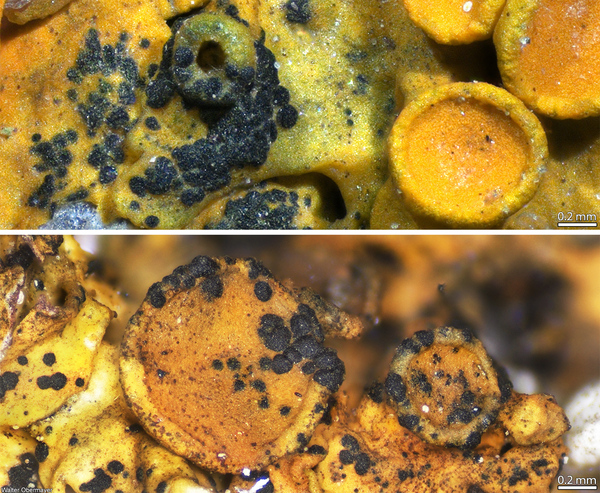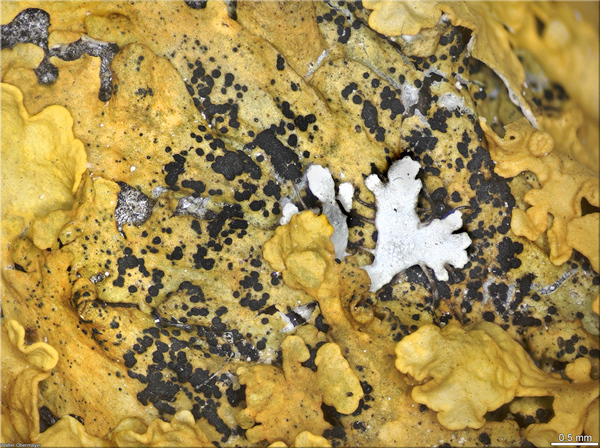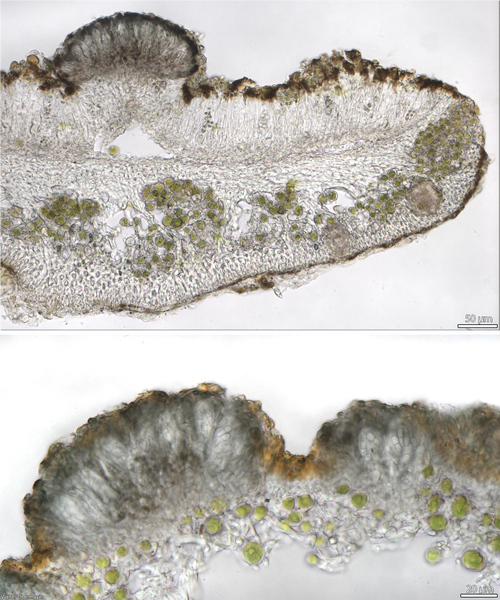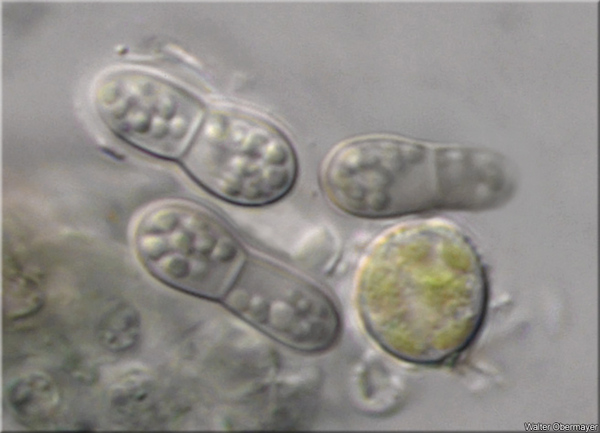Arthonia parietinaria Hafellner & A.Fleischhacker
in Fleischhacker & al., Fungal Biology: 1343, 2016
Synonyms: Bryostigma parietinarium (Hafellner & Fleischhacker) S.Y. Kondr. & Hur
Distribution: N - Frl (Ravera & al. 2024b), TAA (Ravera & al. 2024b). C - Tosc (Brackel 2020), Marc (Brackel 2020), Umb (Brackel 2020), Abr (Brackel 2020), Mol (Brackel 2020), Laz (Brackel 2020), Sar (Fleischhacker & al. 2016, Brackel & Berger 2019, Brackel 2020). S - Camp (Brackel 2021), Bas (Brackel 2011: Fleischhacker & al. 2016, Brackel 2020), Cal (Brackel 2020, Brackel & Puntillo 2023), Si (Brackel 2020).
Description: Thallus inapparent, not lichenized, developing on the thalli, apothecial margins and hymenia of Xanthoria-species, especially X. parietina. Apothecia arthonioid, emarginate, dull black with a brownish tinge, convex, up to 0.25 mm across, arranged in clusters of (10-)20-30(-50) per infection spot. Proper exciple lacking; epithecium dark brown with a bluish tinge, K+ chestnut brown; hymenium pale blue-grey, 30-45 μm high, K/I+ blue; paraphysoids branched and anastomosing, 1-1.5 μm thick, the apical cells 2-5 μm wide, with brown caps; hypothecium pale brown with some darker spots, K/I-. Asci 8-spored, subglobose to broadly clavate, semi-fissitunicate, with a large apical dome, a distinct ocular chamber, and a hemiamyloid (K/I+ blue) ring structure in the innermost layer of the endoascus. Ascospores 1-septate, with one cell usually broader and shorter than the other, hyaline, with a thin hyaline perispore (turning brownish with age), (9-)10-12(-13.5) x (3-)4-5(-6) μm. Pycnidia subglobose to pyriform, the non-pigmented parts of wall K/I+ blue. Conidia ellipsoid. Photobiont absent. Spot tests: thallus K-, C-, KC-, P-, UV-. Chemistry: without lichen substances.Note: A widespread lichenicolous fungus growing on the thalli of Xanthoria parietina, rarely also of other Teloschistaceae. Several earlier records of A. molendoi refer to this species (see Brackel 2020).
Growth form: Lichenicolous fungus
Substrata: bark
Reproductive strategy: mainly sexual
Commonnes-rarity: (info)
Alpine belt: absent
Subalpine belt: extremely rare
Oromediterranean belt: absent
Montane belt: very rare
Submediterranean belt: rather rare
Padanian area: very rare
Humid submediterranean belt: rather rare
Humid mediterranean belt: rare
Dry mediterranean belt: very rare
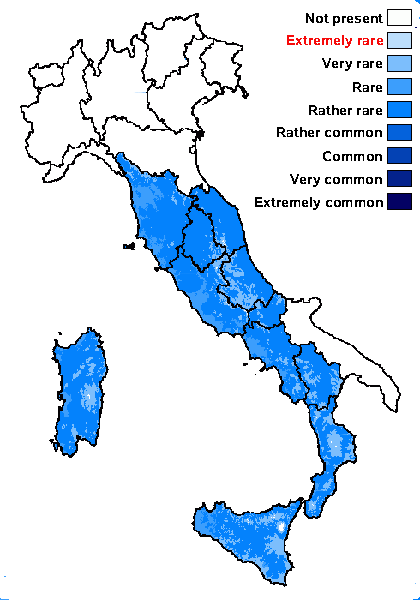
Predictive model
Herbarium samples
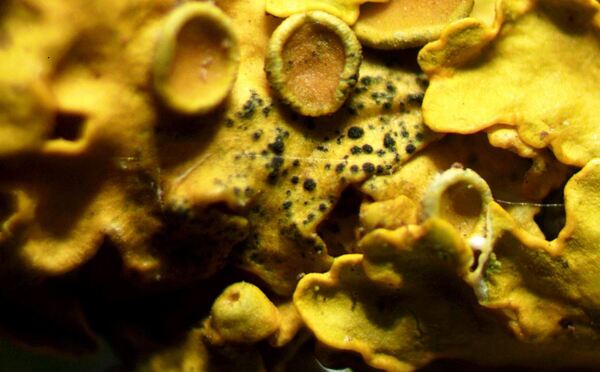
Photo uploaded by P. Cannon, CC BY-SA NC Source: http://fungi.myspecies.info/all-fungi/arthonia-parietinaria
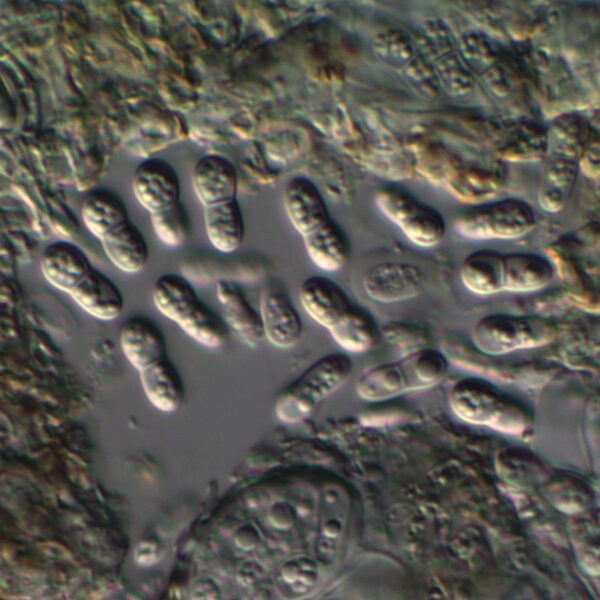
Photo uploaded by P. Cannon, CC BY-SA NC Source: http://fungi.myspecies.info/all-fungi/arthonia-parietinaria
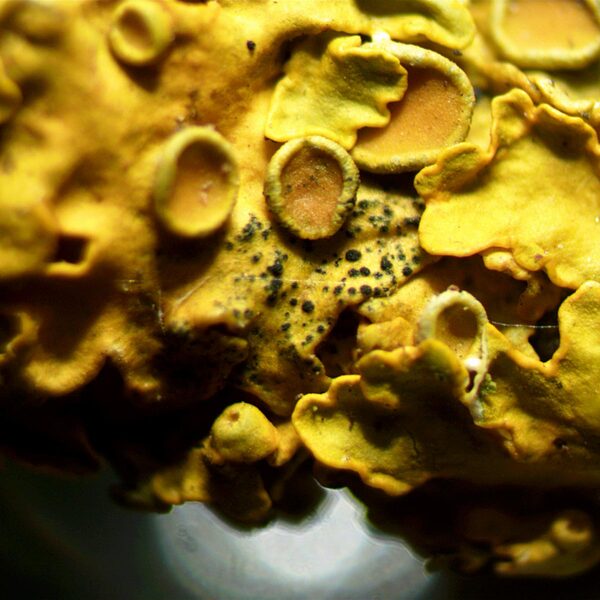
Photo uploaded by P. Cannon, CC BY-SA NC Source: http://fungi.myspecies.info/all-fungi/arthonia-parietinaria
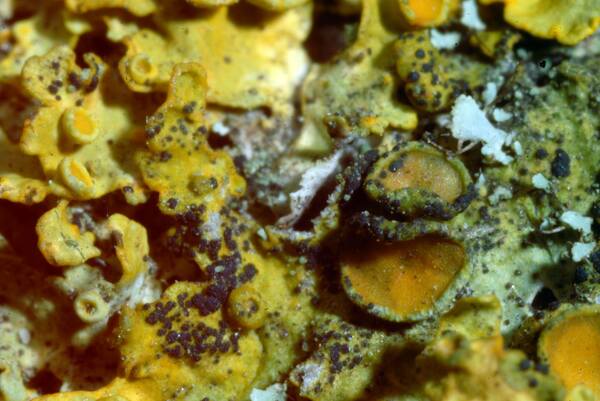
Domenico Puntillo - CC BY-SA 4.0
Italy, Calabria, Cosenza, Bosco di Mavigliano, Montalto Uffugo ; altitude: 200 m
10.10.2013
Growth form: Lichenicolous fungus
Substrata: bark
Reproductive strategy: mainly sexual
Commonnes-rarity: (info)
Alpine belt: absent
Subalpine belt: extremely rare
Oromediterranean belt: absent
Montane belt: very rare
Submediterranean belt: rather rare
Padanian area: very rare
Humid submediterranean belt: rather rare
Humid mediterranean belt: rare
Dry mediterranean belt: very rare

Predictive model
| Herbarium samples |

Photo uploaded by P. Cannon, CC BY-SA NC Source: http://fungi.myspecies.info/all-fungi/arthonia-parietinaria

Photo uploaded by P. Cannon, CC BY-SA NC Source: http://fungi.myspecies.info/all-fungi/arthonia-parietinaria

Photo uploaded by P. Cannon, CC BY-SA NC Source: http://fungi.myspecies.info/all-fungi/arthonia-parietinaria

 INDEX FUNGORUM
INDEX FUNGORUM
 GBIF
GBIF
 DOLICHENS
DOLICHENS
